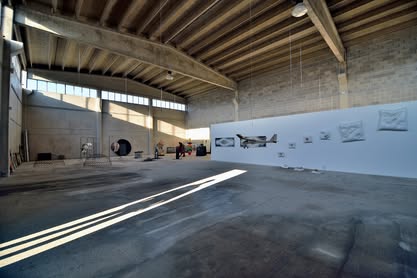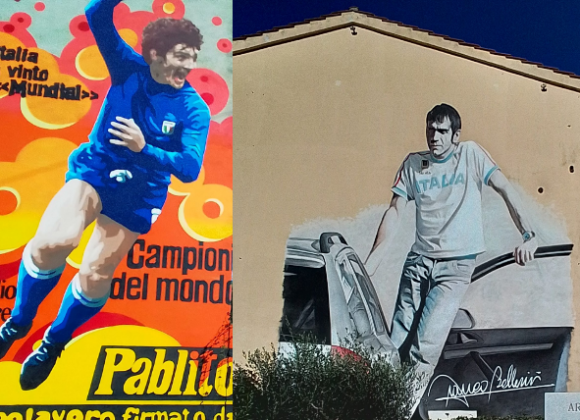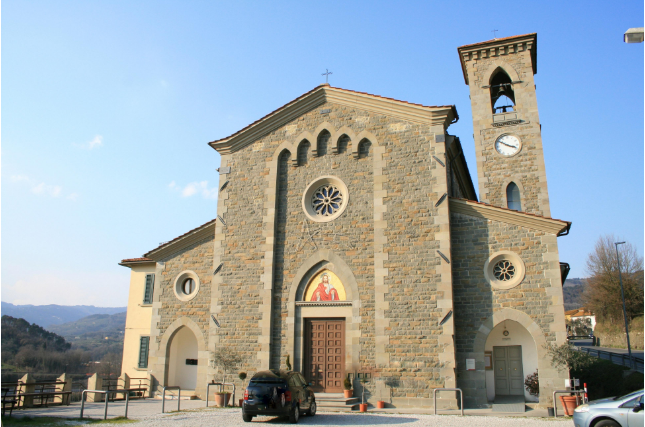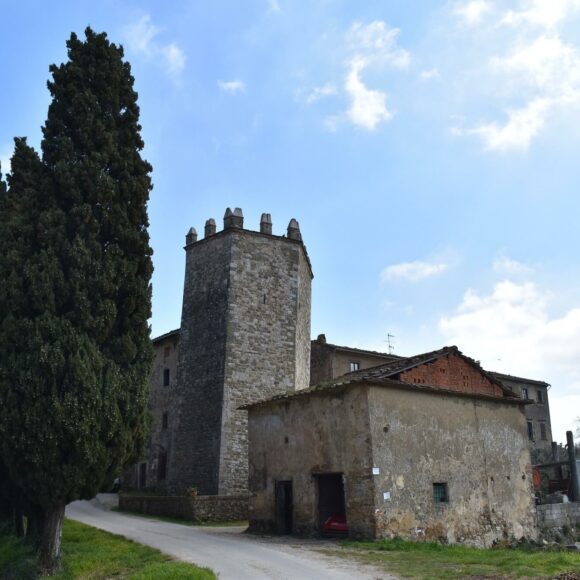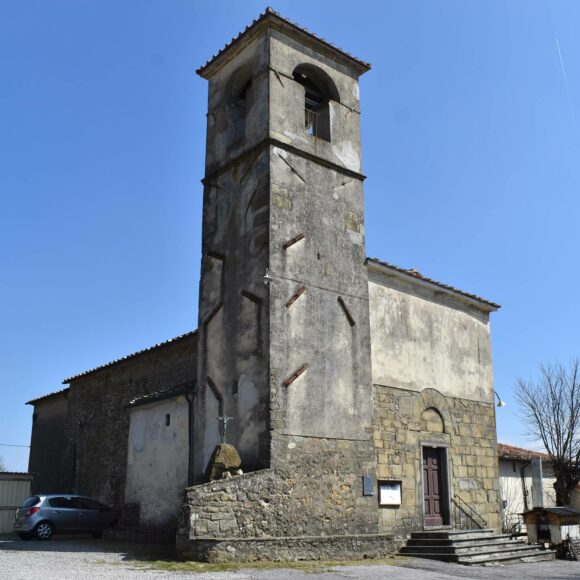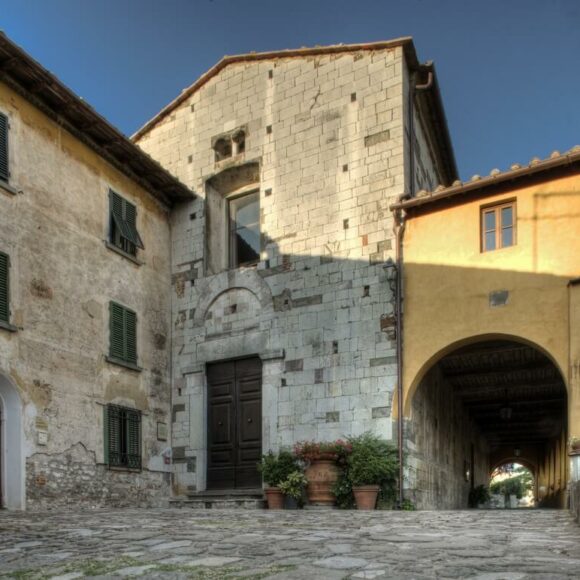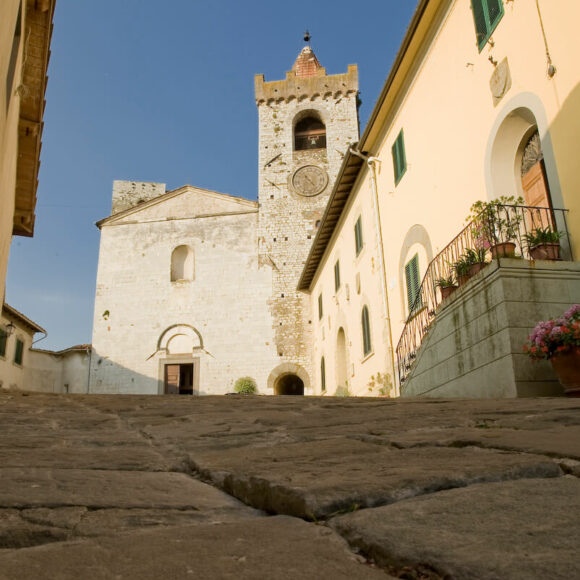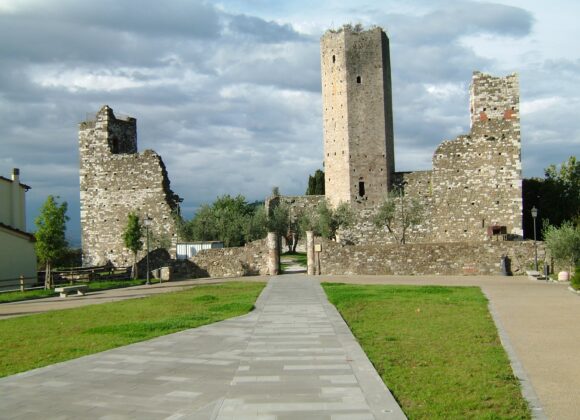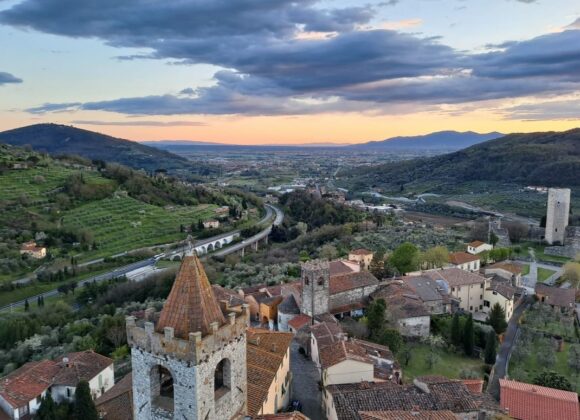Home / scopri / Casalguidi / Chiesa di San Pietro
La chiesa di San Pietro a Casalguidi, tra storia e leggenda, custodisce capolavori rinascimentali, un antico organo e memorie di riti secolari legati alla fede.
La chiesa di San Pietro a Casalguidi è una delle più antiche pievi del contado pistoiese, nota già dagli inizi del XII secolo. L’ aspetto attuale è il risultato delle trasformazioni e degli ampliamenti del 1759, che hanno alterato l’originario nucleo romanico. Sulla parete sud è appoggiato il corpo della settecentesca canonica, con l’attuale corte, retaggio del medievale chiostro della collegiata.
All’interno della pieve è conservata una tavola del Cinquecento raffigurante l’Assunzione della Vergine fra i Santi Pietro, Tommaso, Giovanni Battista e Leonardo di un anonimo pittore pistoiese. La Vergine porge a San Tommaso la sua cintola (venerata nel Duomo di Prato), mentre San Pietro si volge verso di lei con stupore. San Giovanni Battista indica la Madonna e rivolge lo sguardo verso l’esterno del dipinto. Aal suo fianco è presente San Leonardo, patrono dei carcerati, come indica la presenza di una catena, suo attributo.
All’interno della chiesa si conserva anche un importante organo Agati-Tronci, già restaurato nel 1898 e nel 1985.
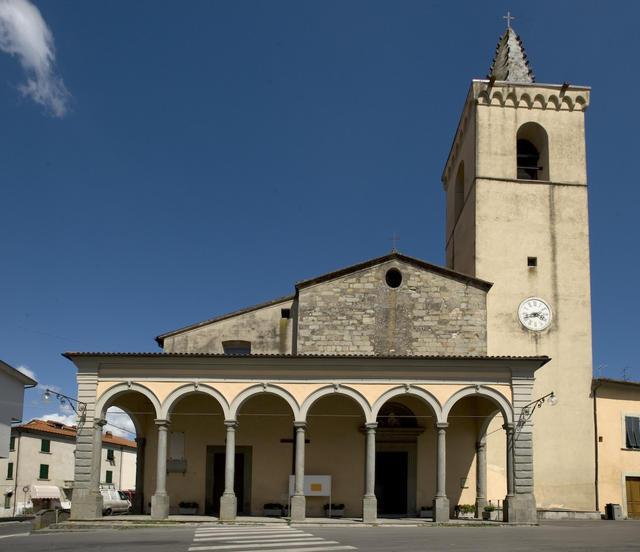
L’opera più interessante è però la Sacra Conversazione con i santi Pietro, Sebastiano, Cosma e Silvestro, dipinta dal pistoiese Leonardo Malatesta tra il 1518 e il 1521. La pala fu commissionata dall’ Opera di S. Pietro per l’altare maggiore della chiesa e da lì venne poi rimossa e posta sull’altare di sinistra. A destra, in primo piano, è raffigurato San Silvestro seguito da San Cosma. La presenza di San Silvestro papa è legata al culto della Quaresima o digiuno del lupo, ossia l’antica usanza di digiunare l’ultimo giorno dell’anno collegata all’arrivo dei lupi e degli orsi che scendevano in pianura dal Montalbano nel periodo invernale per sfamarsi. San Silvestro, papa dal 314 al 335, dopo la sua elezione ordinò infatti il digiuno da osservare in determinati giorni dell’anno. Secondo il miracolo riportato da Jacopo da Varagine, San Pietro apparve a Silvestro prima di incontrare il drago, indicandogli come domare la bestia feroce e invitandolo ad andare da lui, a impresa ultimata, a mangiare il pane che gli aveva preparato. L’usanza del digiuno venne osservata dagli abitanti della zona fino al 1586, quando venne indicata come una pratica legata alla superstizione.


